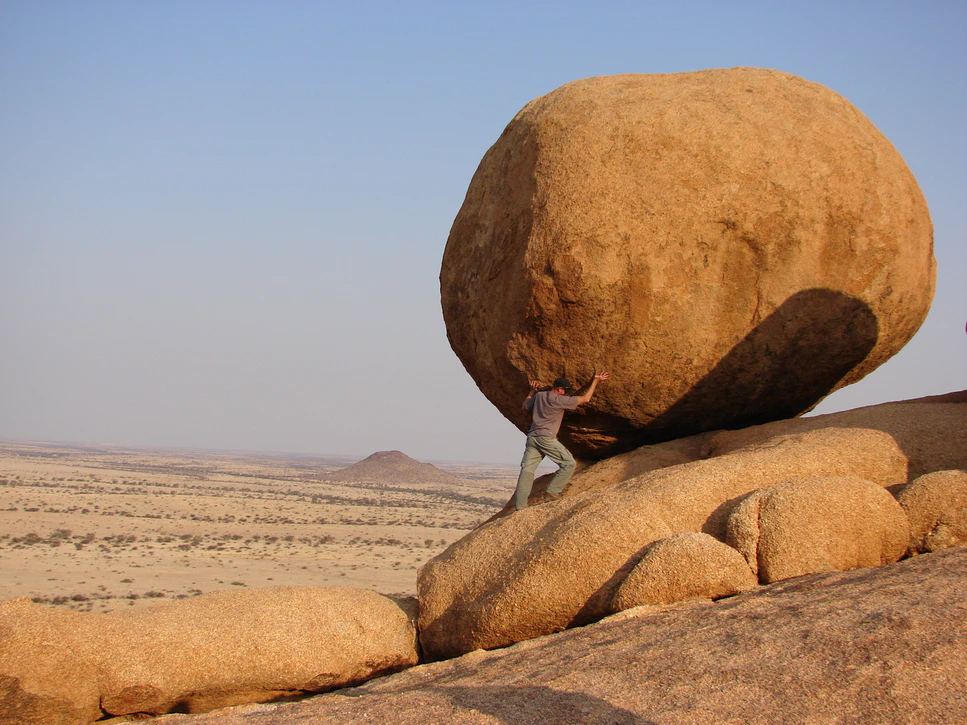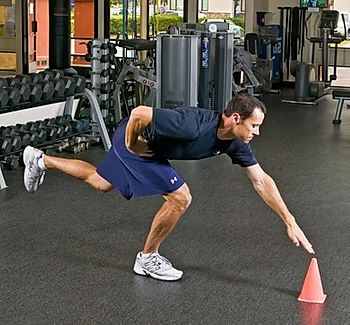4 Keys To Throwing Faster And Harder
With any rotational based sport or activity, the ability to control your limbs and joint positions in space while resisting changes in position differentiate the 'good' movers from the 'great'. High movements speeds, limited amounts of ground contact time (GCT) and a major redirection of force vectors all play a factor in the endeavour for faster shots & throws.
Taking sporting skill/technique variables out of the equation, possessing enough strength, stability, mobility and proprioceptive control allows us to maximize the generation and transfer of force throughout the window in which the skill takes place. These four components all contribute differently to the overall equation of throwing harder, faster and further. Let's dive into each and explore why they're important.
Factor 1 - Strength

If our maximal strength goes up without our body weight changing, then our relative strength goes up along with it. The lower intensity a strength movement is on the body, the more repeatable and less overall taxing it becomes. If you're relatively untrained with weight-lifting, there would a solid amount of improvement to be added to your shot/throw from increasing your overall strength. This isn't limited to just your squat, bench and dead lift numbers though (likely to be a big staple in any athlete's strength improvement program), your ability to isometrically contract create muscular stiffness while being strong enough to resist deformation at high speeds in positions your sport put you in warrant attention too. Working on concentric, eccentric & isometric contraction styles whilst taking into account your personal weak links in the energy transfer chain of tissue will pay dividends. These weak links differ for everyone and can appear at nearly any involved joint up and down the entire body.
With anything in life, there is a point of diminishing returns here. Getting stronger will eventually not lead to increases in your velocity numbers any further due to the highly elastic nature and fascia dominant nature of projectile based sports. In addition to this, the window in which you have to apply force into the movement is relatively small and not large enough to be reaching maximum force output (which would be undesirable anyway as trying to muscle a movement like this encourages rigidity which is the last thing we want).
ADVERTISEMENT
ADVERTISEMENT
Factor 2 - Stability

The body reduces it's force and power output when it perceives that it's in a unstable position. This is an ingrained CNS reaction and can't be overwritten with conscious thought. Studies have shown the drop of force output can be anywhere from 20-70% in regard to isometric strength. The limiting of isometric strength reduces the ability to resist deformation and can end up becoming an energy leak, resulting in a slower throw/shot with less efficiency.
When an individual has enough isometric strength to control front foot collisions well from a low approach speed but feels they aren't able to link the movement together when coming into it at a higher velocity, it may be time to incorporate some time promoting stability with variable positions/unstable surfaces. Although the addition of a modified front foot position/unstable element may seem sub optimal as it reduces output, the weight room is a perfect spot to break down and work on stability in specific positions without the need to match game day performance.
Don't be afraid to take one step back to take two steps forward. The goal here is to give a wider range of variability to your CNS so that whilst taking a shot in a game situation and your foot is 10 cm further to the left than 'perfect' form, your body and nervous system will feel stable and not need to put the brakes on the movement. Wider array of movement options that the body perceives as stable = less CNS throttling on your performance.
Factor 3 - Mobility

The ability to efficiently transfer force requires you to be able to hit the joint range positions necessary to stretch out, load and send the energy through your fascia. If an athlete is lacking front hip internal rotation, they will have reduced range in which that hip can coil itself up before unwinding.
This limitation decreases the time the joint has to produce force as less range = less time for the surrounding muscles to add to the cumulative force being sent through it at that time. It also can present on the other end of the ROM and may not affect the rewind up but may shorten the time frame on the tail end of the joint's motion.
Regardless of where the restriction is, the same reduction in range, force production time and resulting sum of forces will apply. This can be taken further in the way of a mobility restriction so large that an athlete isn't able to hit a position/s that are borderline a requirement in their discipline. A lacrosse player that has minimal thoracic rotation will struggle to coil and uncoil their core to load their shots, a baseball pitcher that struggles with external rotation of the shoulder scapula mobility will have difficulty with their arm whip action.
Don't make the mistake of being in the mindset that "more mobility is always a good thing". A yogi or contortionist may be able to hit crazy positions with large amounts of flexibility but this doesn't relate to the overall goal of athletic performance here as there is minimal transfer of energy or speed/force component. Develop the mobility in the positions you require for your sport, work on strength and control in marginal more extreme ranges for the ability to tolerant variances but don't push the envelope too far in the other direction. The mobility you'll need will differ between movement to movement. A lacrosse player wouldn't need the same level of shoulder ER that a pitcher or javelin thrower would. Just as that javelin thrower may not need the same level of front hip IR that a lacrosse player or pitcher would.
Different sports, different movements, different mobility demands.
Factor 4 - Proprioceptive Control

What benefit is having all the strength, stability and mobility in the world if you don't practice putting them all together into your skill of choice? The components work together to improve overall performance but your body has to repeat the movement enough times to pattern it into the nervous system.
This is true whether you're just learning a skill or attempting to raise your threshold of performance and 're-pattern' a higher level into the CNS. The best performers have repeated their skill enough that their body has learned how to link everything together in a seamless flow without conscious thought. Once a skill becomes more or less automatic, conscious thought can be directed to the game or overall endeavor.
This can be made difficult when working with 'grinder' style athletes that want to work on their skills for numerous hours daily. The deeper a CNS pattern has been grooved, the harder it can be to break those mental and physical routines. This is where external feedback/positional tools can assist to alert the athlete of whether they've performed the movement the way they set out to or not. They may feel they have performed it exactly how you asked despite being completely different due to how worked into their subconscious and nervous system the movement is. Practice perfect repetitions, quality > quantity.
This post originally appeared at Aldred Performance.























